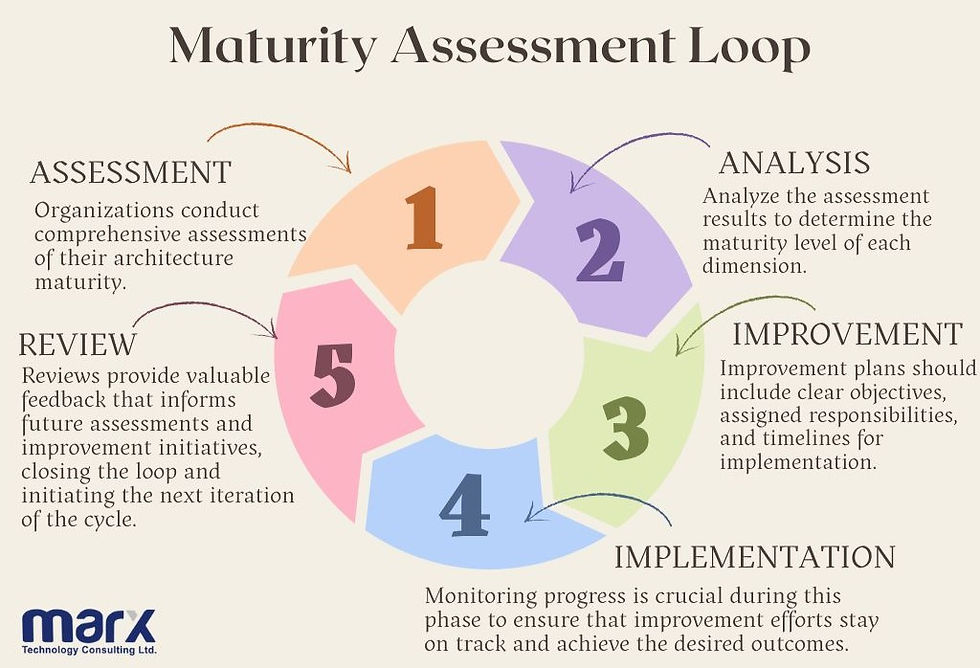Level Up Your Architecture Game. How to lift-up your Enterprise Architecture Quality: Step by Step
- Rajiv Giri
- Apr 30, 2024
- 2 min read
Updated: Nov 14, 2024
Executive Summary
In today’s dynamic business environment, assessing the maturity of an enterprise and solution architecture is critical for aligning IT capabilities with strategic business goals. This blog provides a concise guide proving how Marx can help support your organization on measuring the maturity of architectural practices using assessment methods. By applying these techniques, organizations can gain insights into their current state, identify areas for improvement, and drive effective decision-making at the executive level.

STEP BY STEP. How to measure enterprise and solution architecture maturity

Step 1: Define Assessment Criteria
Marx can help define your assessment criteria starting by defining the key dimensions of architecture maturity you wish to assess. Common dimensions include governance, methodology, technology, and people. Each dimension should have specific criteria that reflect best practices and organizational objectives.
Step 2: Select Assessment Method
Marx can help select your assessment method choosing an assessment method that suits your organizational needs. Options include maturity models such as the Architecture Maturity Model (AMM), surveys, and interviews. Maturity models offer a structured approach, providing levels that describe the maturity stages from initial to optimized processes.
Step 3: Conduct the Assessment
Marx can help conduct the Assessment and gather data through the chosen method. This may involve self-assessments, interviews with key stakeholders, and reviews of architectural documentation. Ensure that the assessment is comprehensive and includes feedback from a variety of roles within the organization.
Step 4: Analyze results
Marx can help analyse the results to determine the maturity level of each dimension. This analysis should highlight strengths, weaknesses, and gaps in your architecture practices. Visualization tools like heat maps can be effective in presenting these results to stakeholders.
Step 5: Develop improvement plans
Marx can help develop improvement plans based on the assessment findings, develop targeted improvement plans. These should address gaps and leverage strengths to elevate the overall maturity of your architecture. Each plan should include clear objectives, assigned responsibilities, and timelines.
Step 6: Implement, monitor, and review
Marx can help implementing the improvement plans and monitor their progress regularly. It's important to review the impact of these changes and adjust your strategies as necessary. Repeat the assessment periodically to ensure continuous improvement.

Therefore, assessing the maturity of your enterprise and solution architecture is not just a one-time activity but a continuous process that provides valuable insights for strategic alignment and enhanced decision-making. By systematically evaluating your architectural practices, your organization can adapt more effectively to the changing business landscape and maintain a competitive edge.
By following this guide, organizations can establish a clear pathway for advancing their architectural maturity, ensuring that their IT infrastructure not only supports but also drives business objectives forward in an ever-evolving market. Thus, this Enterprise Architecture Operating Model (EAOM) will provide customers the assessment criteria (i.e. building blocks) and assessment method (i.e. rating scale). And Marx will have the capability to perform the above 6 steps for potential customers.

If you liked this article and would like more information, do not hesitate to contact a specialist via email: paula@marx.co
or book directly a free meeting with us: https://calendly.com/paula-ogbz/30min






Comentários